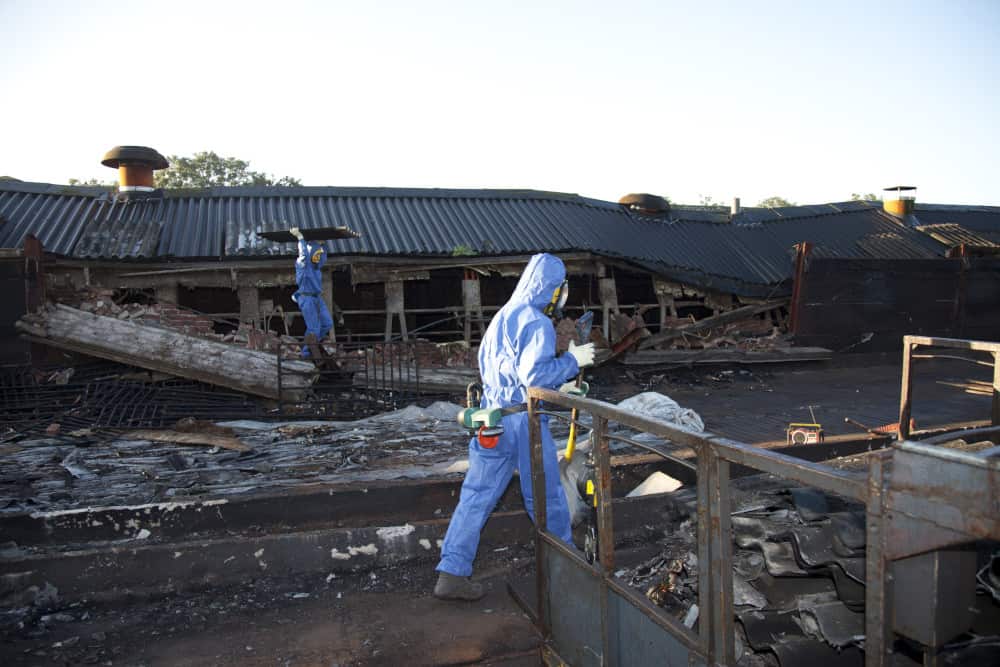What Kind of Flooring is More Likely to Contain Asbestos?
Asbestos is a group of a total of six naturally occurring minerals that are made up of heat-resistant fibers. It is a very good electrical insulator and was widely used in buildings, various daily life products such as cloth, paper, and plastic to ensure efficient insulation or, in other words, to heatproof it. The material turns out to be strong and resilient against fire, high tensile strength, ideal wear, and friction characteristics, and high resistivity against thermal and chemical exposure.
Asbestos in flooring
Asbestos was a popular additive in vinyl flooring for a long time. It provided strength and resistance against heat before its side effects were discovered. Manufacturers used it in their constructions as it was cheap and effective. Vinyl Flooring was a popular choice when it came to the home and commercial buildings. Be it vinyl sheets or flooring tiles, homeowners loved it as they are really inexpensive, long-lasting, and have a wide range of aesthetic options to choose from, and the fact that they could withstand wear and tear.
The use of asbestos in vinyl floorings soon appeared to be one of the major blunders manufacturers could commit as the material is a huge health hazard, even fatal in some cases. Most of the structures built before the 80s contain Asbestos as it was a common and demanded material so it can still exist in buildings today.
Flooring and Adhesive
The type of flooring that contains Asbestos often appears stained or oily and is usually in darker colors. It is because, Asphalt is used as the main ingredient in flooring tiles and with time, discolouration occurs causing the tiles to lose their original charm hence appear grimy.

Adhesives for the floorings
Even if the tiles or marble aren’t likely to contain asbestos, some adhesives which are asphalt-based and have a higher chance of containing Asbestos equivalents the chances presence of fibers in the flooring, thus endangering the health of the inhabitants. Black Mastic, which is a thick, dark, black glue (also called Cut-Back Adhesive) is used for flooring tiles down, most likely containing Asbestos.
These days, the most commonly used tiles are 12×12, while back in the day when 9×9 tiles were used, chances were that they do contain Asbestos fibers. But after the allegations of being a health hazard, homeowners began renovating their place. Few were even reported vacating the building due to a slight chance of Asbestos Fibers being present in the atmosphere as previous manufacturers used them widely. Even though vacating the place was not a very good idea as it was definitely expensive and impractical and above of all, not everybody with a risk of asbestos presence in their buildings could pull that off. As others began renovation and used Asbestos-free tiles on the top of original flooring to save cost and the risk of getting fatal diseases, it should buildings management team a new way to save themselves from the likely hazards of developing deadly cancers caused by these fibers, which, with time proved to be more convenient, time-, and -cost-saving.
Major alternatives that were used to minimize the risk included:
Trying new flooring techniques such as
• New vinyl
• Laminate
• hardwood
• Engineering floating flooring, and
• Carpeting
In conclusion, if your home is from the time when these risks were yet to be brought to light and certain researches weren’t conducted or even made public, it is most likely to contain Asbestos fibers in its floorings, ceilings, insulating materials, floor vents, etc. So it’s better to get it checked to save oneself from the number of life taking diseases caused by this aesthetically pleasing yet killing mineral. Asbestos is banned in developed countries as SAVE THE ENVIRONMENT and GO GREEN movements are quite active as compared to those countries that are less developed. Where masses still suffer from ever-increasing poverty and other economic dilemmas. Therefore, South Asian and African countries are at high risk, where this material is still extensively used in manufacturing buildings and other infrastructures to save cost and improve the resilience of the product.